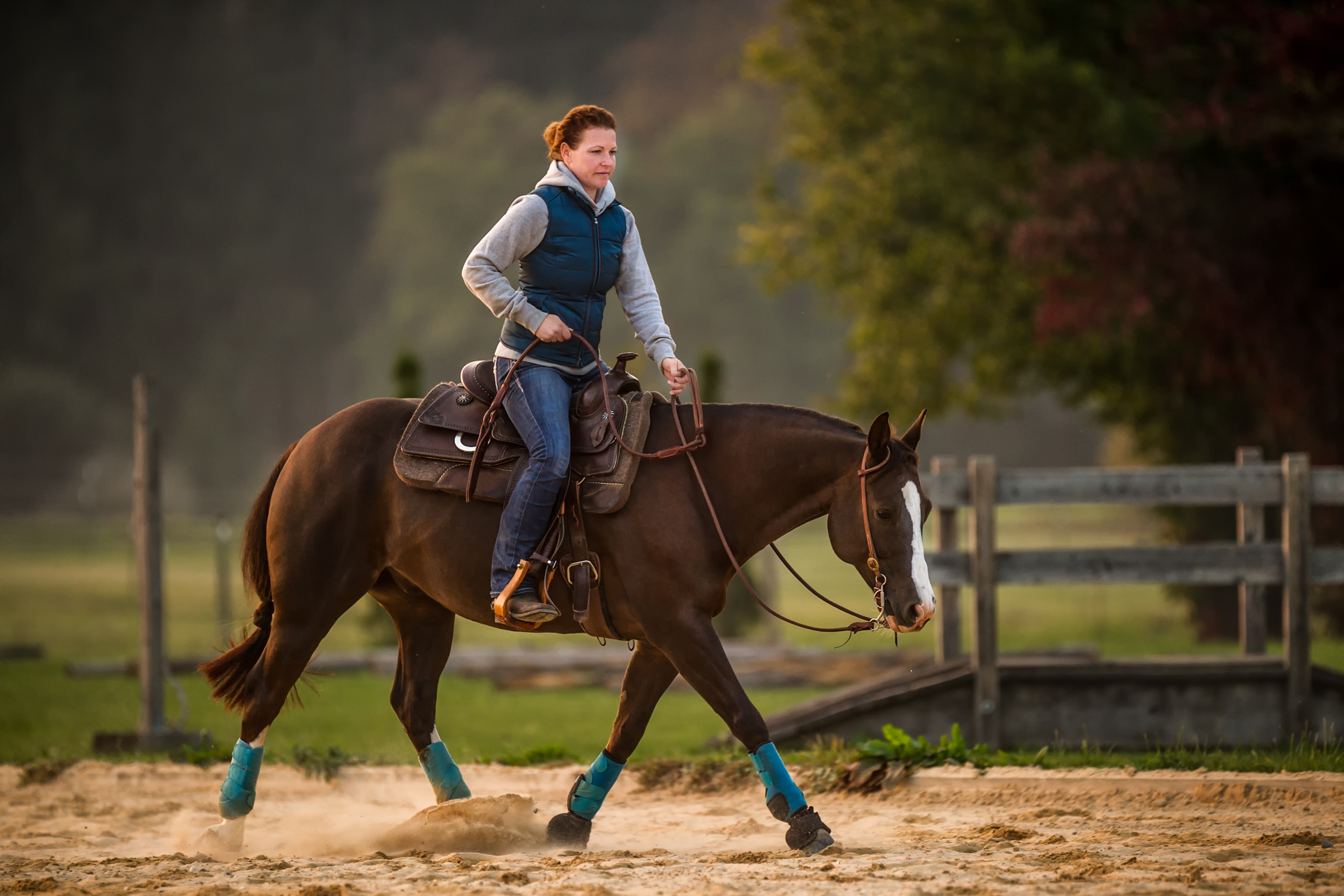Question: My horse is beginning to develop minor arthritis, but he is prone to laminitis so I know I need to keep him active. What are some good exercises for him that won’t stress him too much? He has been started on an MSM/glucosamine supplement.
Name withheld by request
Answer: Arthritis is the inflammation of a joint. People experience different types of arthritis, but in horses, we primarily see degenerative osteoarthritis (OA)—inflammation that, when unchecked, leads to degradation of the cartilage and the remodeling of the bone in and around a joint. Lameness and swelling in a joint are obvious signs of advancing OA, but earlier warnings can include reduced activity when the horse is at liberty, stiffness or mild lameness that disappears with exercise, and an uncharacteristic reluctance to jump, turn around barrels or perform other athletic activities.

Horses develop OA for a number of reasons, and effective treatment requires identifying and addressing the underlying cause. Poor conformation, advanced age and obesity can make a horse more susceptible to arthritis, and other common causes include joint infection, trauma and overuse stemming from training or competition. Promptly treating causes like trauma, especially in younger horses, may lead to a return to complete soundness. Corrections in trimming and/or shoeing can also be beneficial for horses with conformation issues.
Click here to learn what noisy joints may mean.
Anti-inflammatory therapy may also aid horses with arthritis. These medications may be administered systemically or topically over the affected joint; ask your veterinarian about prescribing an appropriate treatment regimen. In addition, many equine professionals feel that supplements are beneficial to horses with OA. Look for products with ingredients such as glucosamine, chondroitin sulfate, hyaluronan (HA), polysulfated glycosaminoglycans (PSGAGs), methylsulfonylmethane (MSM), avocado-soybean unsaponifiables (ASU) and vitamin C.
I would suggest that you arrange a consultation between your farrier and veterinarian so that the foot can be trimmed/shod to optimize the biomechanics with regard to the specific area of concern. The benefits of appropriate hoof care can be the difference between comfort and chronic pain.
An aging horse and/or one who is developing OA from overuse would benefit from scaling back the level of his work—retiring the active jumper or reiner from competition, for example. But, as with people, a horse with arthritis benefits from a regular exercise program to maintain flexibility and conditioning. Although it may seem counterintuitive to make a horse work despite his stiff, painful joints, exercise has several benefits:
• Regular work increases the strength of the muscles and helps them support the skeleton with more stability.
• Movement stimulates circulation, which in turn promotes healing.
• Gentle concussion helps stimulate the generation of healthy new bone and cartilage cells.
• Burning calories helps the horse reach or maintain a healthy weight.
The goal, of course, is to work the horse hard enough to gain these benefits but not so much that the inflammation in his joints increases and makes the situation worse. Unfortunately, your letter does not provide enough information about the specifics of your case for me to suggest a detailed exercise program. Many horses who are diagnosed with the early stages of arthritis can continue to safely carry riders on level trails and perform other low-impact activities, including some jumping. Those with advanced OA may not be able to handle any more than turnout with a quiet companion. Your veterinarian is your best guide for mapping out an exercise regimen that will meet your horse’s needs.
In general, however, I would say that the benefits of simple walking should not be underestimated. As your horse becomes more comfortable with your starting pace, you can make changes in the type, tempo, time and intensity of your workouts. You can also increase your horse’s flexibility with exercises performed in hand, such as baited stretches, which make him bow or reach to each side to get a carrot. The book Activate Your Horse’s Core: Unmounted Exercises for Dynamic Mobility, Strength & Balance, by Narelle C. Stubbs and Hilary M. Clayton, provides an excellent guide to these types of exercises.
In summary, the best results for treating a horse with OA require a multifaceted approach that includes proper diagnostics, anti-inflammatory therapy, appropriate trimming and shoeing, and a progressive rehabilitative regimen. As one of my mentors said to me, “Try something, and if the horse goes better it’s probably good for him.” Ironically in this age of science and imaging, the expression of the horse can still be the best guide to providing care.
Roland Thaler, VMD, DACVSMR, Cert. ISELP, COAC
Metamora Equine Clinic PC
Metamora, Michigan
This month’s expert: An adjunct professor at Michigan State University, Roland Thaler, VMD, DACVSMR, Cert. ISELP, COAC, owns the ambulatory equine practice Metamora Equine Clinic PC. He is a member of the International Society of Equine Locomotor Pathology, American Association of Equine Practitioners, American Veterinary Medical Association and the Michigan Horseshoers Association. Thaler earned his veterinary degree at the University of Pennsylvania and interned at the Delaware Equine Center in Cochranville, Pennsylvania.
This article first appeared in EQUUS issue #464
Don’t miss out! With the free weekly EQUUS newsletter, you’ll get the latest horse health information delivered right to your in basket! If you’re not already receiving the EQUUS newsletter, click here to sign up. It’s *free*!








